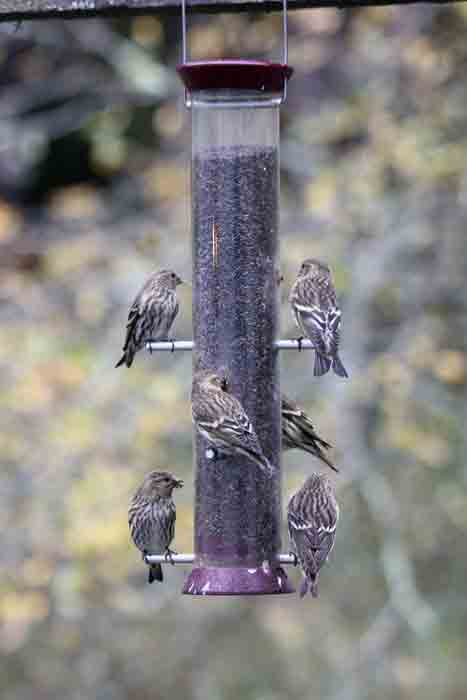The 26th season of Project FeederWatch begins November 10, and participants are needed more than ever. By watching your feeders from November through April and submitting what you see, you’re making it possible for scientists to keep track of changing bird populations across the continent. New or returning participants can sign up anytime.
 After unusual winter weather in some parts of the country last season, many participants found themselves asking, “Where are the birds?”—but the story might be different this year.
After unusual winter weather in some parts of the country last season, many participants found themselves asking, “Where are the birds?”—but the story might be different this year.
The AccuWeather long-range forecasting service is predicting some big storms in the Northeast this winter, so FeederWatchers in that region may see more birds at their feeders than they did last winter. Forecasts also call for another year of below-normal snowfall for the Midwest, above-normal snowfall and below-normal temperatures for the central and southern Rockies, and a wet winter with above-normal precipitation for the Gulf Coast and Southeast.
“We’ll have to see if those predictions pan out and how they might affect feeder-bird numbers,” says David Bonter, project leader for FeederWatch. “The one number we definitely want to see increase is the number of people taking part in FeederWatch. It’s easy to do, and the information is incredibly valuable in helping us better understand what’s going on in the environment and in the lives of the birds we enjoy so much.”
Other things to look forward to as the season approaches:
- A new photo gallery featuring some of the many photos FeederWatchers sent in during the 2011-12 season.
- This year’s Winter Finch Forecast shows it could be a great winter for birds at feeders—so don’t miss it! Red-breasted Nuthatches, Red Crossbills, Evening Grosbeaks, and other birds are likely to be on the move after a relatively poor summer for cone crops. Read the full forecast for more details.
- Winter Bird Highlights is the annual summary of the previous season’s results. The 2012 issue is being mailed to Canadian FeederWatch participants in their kits and will be mailed to U.S. participants with the fall issue of Living Bird News (late October). You can also get a PDF version online and read it immediately.
To learn more about joining Project FeederWatch and to sign up, visit www.feederwatch.org or call the Cornell Lab toll-free at (866) 989-2473. In return for the $15 fee ($12 for Cornell Lab members), participants receive the FeederWatcher Handbook and Instructions with tips on how to successfully attract birds to your feeders, an identification poster of the most common feeder birds, and a calendar. Participants also receive Winter Bird Highlights, an annual summary of FeederWatch findings, as well as the Cornell Lab’s quarterly newsletter, Living Bird News.
(Project FeederWatch is a joint research and education project of the Cornell Lab of Ornithology and Bird Studies Canada.
Image: Dick Mansfield
Discover more from Vermont Birder
Subscribe to get the latest posts sent to your email.
